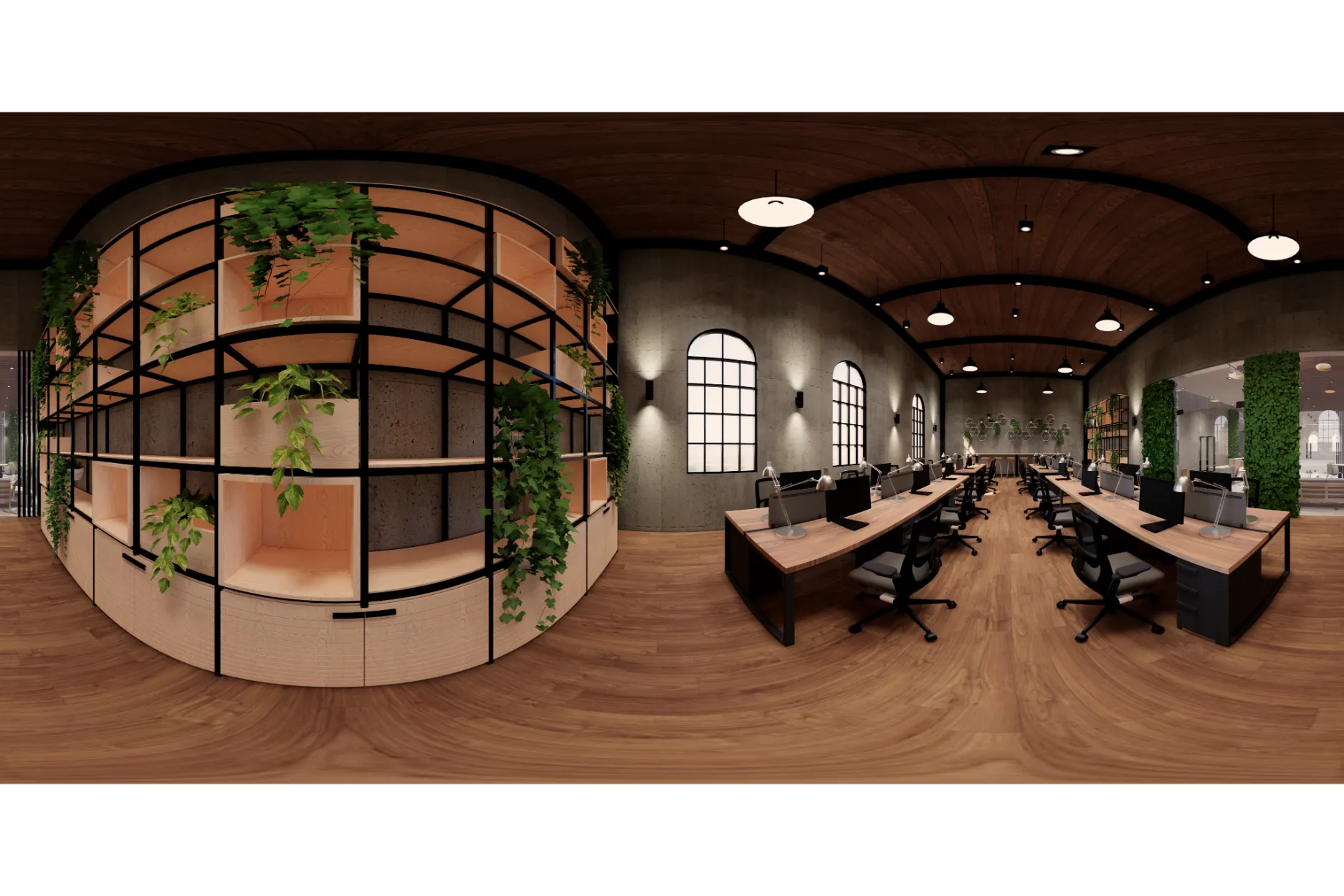
In the rapidly evolving world of retail, staying ahead of the competition requires innovation and adaptation. One of the most exciting developments in recent years has been the integration of 3D technology into the shopping experience. Manufacturers, distributors, and retailers are all-embracing 3D stores to transform the way consumers interact with their products.
In this blog, we'll explore how 3D stores are revolutionizing product visualization, with a particular focus on panoramic views, virtual reality, 360-degree interior design, and 3D walkthroughs. By the end of this read, you'll have a deep understanding of how these technologies are shaping the retail landscape in 2023.
Remember the days when product images were limited to static, two-dimensional photos? Those days are rapidly fading into history as panoramic views become the new standard for product visualization. Imagine being able to explore every angle of a product as if it were right in front of you. That's the power of panoramic views in 3D stores.
Retailers are using panoramic technology to create immersive shopping experiences. It's not just about seeing the front and back of an item; it's about rotating it, zooming in to examine intricate details, and even changing colors or configurations in real-time. This level of interactivity allows customers to make more informed purchasing decisions and reduces the chances of returns.
But how are manufacturers and distributors benefiting from panoramic views? For starters, they can showcase their products in a way that's impossible with traditional photography. The ability to highlight intricate features, textures, and finishes gives their offerings a competitive edge. Moreover, the comprehensive product views also help minimize customer inquiries and increase sales.
Virtual reality (VR) is no longer just for gaming. It has found its place in the retail world, and it's changing the game for both businesses and consumers. Imagine putting on a VR headset and stepping into a virtual store from the comfort of your living room. In 2023, this is not only possible but also becoming increasingly common.
Manufacturers, distributors, and retailers are investing in VR to create immersive shopping environments. Shoppers can explore product displays, interact with items, and even virtually try them on. This not only enhances the customer experience but also bridges the gap between online and in-store shopping.
For manufacturers and distributors, VR offers a unique opportunity to showcase their products in realistic settings. Instead of traditional catalogs or photographs, they can present their products in fully furnished rooms, allowing potential buyers to visualize how these items fit into their own homes. This level of realism can significantly impact purchasing decisions.

The integration of 360-degree technology into interior design is another game-changer. Whether you're renovating your home or just redecorating a room, 360-degree interior design tools give you the power to visualize and plan with precision.
Manufacturers and distributors are partnering with interior design software companies to provide consumers with tools to design their spaces. These tools allow you to select furniture, paint colors, lighting, and more, all within a 360-degree view of your room. It's like having a virtual interior designer at your fingertips.
But it's not just about DIY interior design. Retailers are also using 360-degree technology to showcase their furniture and home decor products. Customers can virtually place items in their homes, ensuring they are the perfect fit before making a purchase.
Ever wish you could walk through a store without leaving your home? 3D walkthroughs make that a reality. These immersive experiences allow customers to explore physical retail spaces as if they were there in person.
Manufacturers, distributors, and retailers are using 3D walkthroughs to create digital replicas of their brick-and-mortar stores. Customers can navigate through the aisles, browse products, and even click on items for more information. This technology is particularly valuable for those who prefer the in-store experience but want the convenience of online shopping.
3D walkthroughs also offer a unique opportunity for retailers to showcase their store layouts and product placements. It's a powerful tool for visual merchandising and can lead to increased sales and customer engagement.
Now that we've explored these groundbreaking technologies, let's see how they come together in a real-life example.
Imagine you're shopping for a new sofa. You visit a furniture retailer's website and are greeted with a 3D store experience. You put on your VR headset and find yourself inside a beautifully designed virtual showroom. You see a 360-degree view of a living room and spot a sofa that catches your eye.
Using your VR controller, you approach the sofa and click on it to get more information. A detailed panoramic view of the sofa appears, allowing you to examine its fabric, and color options, and even adjust its configuration to fit your space.
Next, you decide to use the 360-degree interior design tool provided on the website. You upload a photo of your living room, and within seconds, you're virtually placing the sofa you liked in your own space. You experiment with different colors and layouts until you're confident it's the perfect choice.
Before making your final decision, you take a 3D walkthrough of the retailer's physical store to see how the sofa looks in its real-life setting. You navigate through the virtual aisles and explore other furniture options.
This comprehensive shopping experience, made possible by panoramic views, virtual reality, 360-degree interior design, and 3D walkthroughs, has not only saved you time but also provided a level of confidence in your purchase that traditional online shopping couldn't match.
Read Also: Top 5 Ways To Achieve Higher ROI For Your Decor Business
As we've explored the impact of 3D stores on manufacturers, distributors, and retailers in 2023, it's evident that these technologies are revolutionizing product visualization. Panoramic views, virtual reality, 360-degree interior design, and 3D walkthroughs are transforming the way consumers interact with products and make purchasing decisions.
In this ever-evolving retail landscape, embracing these innovative tools is not just a trend but a necessity. Businesses that invest in 3D technology will not only stay competitive but also provide their customers with immersive and engaging shopping experiences that are truly unforgettable. In 2023 and beyond, the future of retail is three-dimensional, and it's here to stay.
FAQs
Transitioning to 3D stores in 2023 may pose challenges such as initial implementation costs, the need for skilled 3D designers, and ensuring compatibility with existing systems.
In 2023, 3D store technology has become more accessible due to advancements and cost reductions. Many software platforms and service providers offer solutions tailored to various business sizes, making it feasible for manufacturers, distributors, and retailers to adopt this technology and stay competitive.
A 3D store is a virtual retail environment that uses three-dimensional technology to replicate the physical shopping experience online. In 2023, it significantly impacts manufacturers by providing a platform for immersive product showcasing.